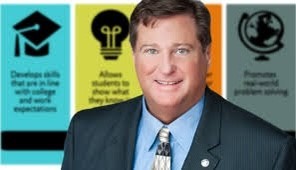We must have a candid conversation about a delightful little subject that has somehow managed to become the elephant in the room: debt. Yes, that nagging little shadow that follows us everywhere, whispering sweet nothings about how we can have it all—until the bill comes.
In recent years, we have seen our society stumble into a financial funhouse filled with sports gambling debt, credit card debt, medical debt, student loan debt, and probably even that mysterious debt you incurred for that inflatable bounce house you just had to have. The total U.S. household debt recently hit a whopping $18.39 trillion. That’s trillion with a "T," folks!
You see, debt isn’t just a personal problem; it’s a societal one. It’s like a bad reality show —everybody’s involved, and nobody knows how it will turn out. You know things are grim when people are gambling away their futures in sports, as if betting on the Super Bowl is a solid retirement plan. Who knew that our national pastime would turn out to be spiraling into debt while rooting for our favorite team?
Let’s break this down. The average American household is carrying about $152,000 in debt. That’s like trying to carry your entire family’s Thanksgiving dinner in one trip—impossible and likely to end in disaster.
Mortgages are the heavyweights in this debt ring, with $12.94 trillion weighing down our collective shoulders. And then there’s credit card debt, which is like that friend who always asks to borrow money and never pays you back—currently sitting at $1.14 trillion. Add to that $1.6 trillion in auto loans and student loans, and you have a debt buffet that nobody wants to attend.
Now, you might ask, “What’s the deal with all this debt?” Well, it turns out that high household debt is about as fun as getting a root canal. It squeezes our disposable income like an overripe lemon, leaving us with little to spend on the things we actually enjoy, like not stressing about money.
This financial squeeze can lead to real health issues, not just in our wallets but in our minds. Who knew that worrying about credit card bills could be more stressful than watching the Tennessee Titans game?
We must act. Policymakers need to step up and do something dramatic—think of it as a financial superhero moment. They could implement stricter regulations on gambling, reform credit practices, and make healthcare more affordable. Imagine a world where you don’t have to choose between paying your medical bills and buying groceries. It’s a dream worth fighting for!
And let’s not forget about financial literacy. If we can teach young people how to manage their money effectively, we might prevent future generations from falling into the same traps. This is mission-critical in our state and our nation. Our state has established the Tennessee Financial Literacy Commission so that Tennessee students have access to quality financial literacy resources early and often as they matriculate through the educational system.
Our state needs to capitalize more on this valuable resource. Tennessee Treasurer David Lillard, both the visionary and impetus behind the program in Tennessee, told the Elizabethton Star: “It’s a matter of training people early in life.” He added that the new program places emphasis on students in K-8 grades. “We are trying to effect a generational shift in how Tennesseans think about finances.”
As we look to the future, we need to be realistic. If we continue down this path, U.S. household debt could surpass $20 trillion by the late 2020s. That’s a number so significant it makes my head spin. But it doesn’t have to be this way. With the right policies and a little bit of common sense, we can turn the tide.
The debt crisis we face is a comedy of errors that requires a serious rewrite. It’s time for us to come together, tackle this issue head-on, and create an economy that works for everyone. Because if we don’t, we might as well start a new reality show called “America’s Next Top Debt.” And trust me, nobody wants to see that.
##
JC Bowman is the executive director of Professional Educators of Tennessee.











